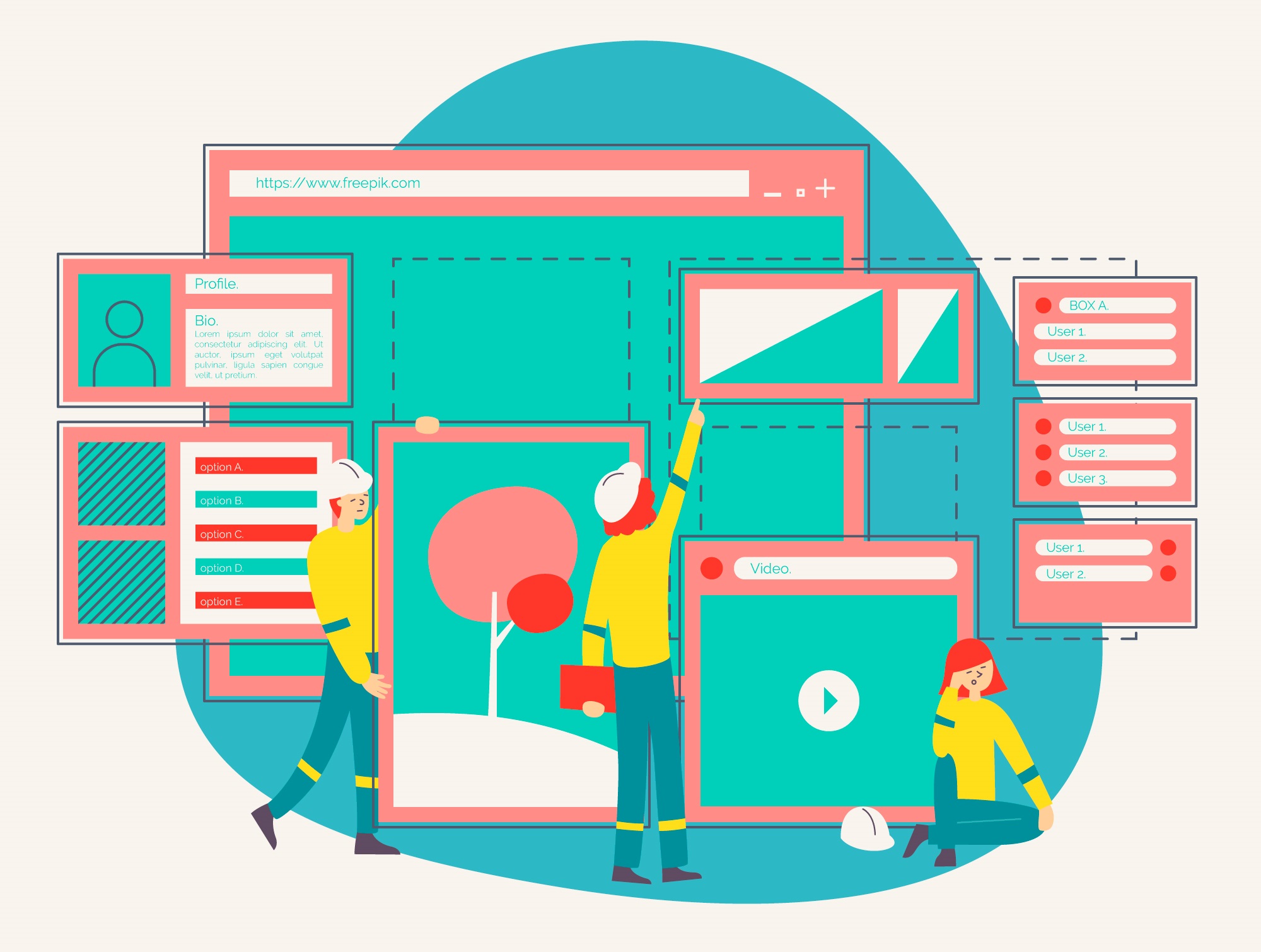


Web design and development refer to the processes of creating and building websites or web applications. Web design focuses on the visual and aesthetic aspects, encompassing layout, color schemes, typography, and overall user interface design. It involves creating a visually appealing and intuitive interface that effectively communicates information and engages users.
On the other hand, web development involves the technical implementation of the design, dealing with the functionality and features of the website or application. This includes coding, server-side scripting, database management, and the integration of various technologies to ensure seamless interactions. Both design and development are interconnected, aiming to deliver a cohesive and user-centric digital experience. Successful web design and development require a balance between creative design elements and functional, efficient coding to produce websites that are not only visually pleasing but also user-friendly and technically robust.
The number 1 rule of web design and development is user-centricity. User-centric design is a fundamental principle that places the needs, preferences, and experiences of users at the forefront of the design and development process. Creating a website or web application with the end user in mind is essential for building successful and effective digital products.
User-centric design encompasses various aspects, from the visual elements of a website to its functionality and overall user experience. In essence, it involves understanding the target audience, their behaviors, and their goals to create a seamless and enjoyable interaction.
To design and develop a website that caters to users, it's crucial to thoroughly understand the target audience. This involves conducting user research to gather insights into their demographics, preferences, and behaviors. Analyzing user personas can help in creating a design that resonates with the intended users, addressing their specific needs and pain points.
Usability is a key component of user-centric design. A website should be easy to navigate, with a clear and intuitive structure. Users should be able to find information quickly and complete tasks without unnecessary complications. This often involves creating a clean and organized layout, implementing clear navigation menus, and providing relevant and easily digestible content.
In the age of smartphones and tablets, ensuring a responsive design is paramount. Users access websites from a variety of devices and screen sizes, and a responsive design adapts the layout and functionality to provide an optimal experience across different platforms. This not only enhances user satisfaction but is also crucial for search engine optimization (SEO), as search engines favor mobile-friendly websites.
Another crucial aspect of user-centric design is accessibility. A website should be usable by individuals with diverse abilities and disabilities. This includes designing for screen readers, providing alternative text for images, ensuring keyboard navigation, and considering color contrasts for those with visual impairments. Prioritizing accessibility not only broadens the reach of a website but also aligns with ethical design principles.
User-centric design extends beyond aesthetics and functionality to include performance considerations. Users get frustrated on a slow-loading website leading to high bounce rates. Optimizing performance involves compressing images, minifying code, leveraging browser caching, and utilizing content delivery networks (CDNs). Prioritizing speed contributes to a positive user experience and can impact a website's search engine rankings.
To further enhance user-centricity, incorporating feedback mechanisms is essential. This involves gathering user feedback through surveys, user testing, and analytics. Understanding how users interact with a website provides valuable insights for continuous improvement. A/B testing and heatmaps are tools that help identify areas for enhancement and refinement based on user behavior.
Consistency in design elements and user interface patterns is vital for a seamless user experience. Users should be able to predict how different parts of the website will behave based on their interactions with other sections. Consistent navigation menus, button styles, and color schemes contribute to a cohesive and user-friendly design.
Prioritizing the security and privacy of user data is a non-negotiable aspect of user-centric design. Implementing robust security measures, including secure data transmission (SSL), encryption, and compliance with privacy regulations, builds trust with users. Clearly communicating the website's privacy policy and ensuring data protection are critical for maintaining a positive user experience.
The digital landscape is dynamic, and user needs and expectations evolve over time. The number 1 rule of web design and development acknowledges the importance of continuous improvement. Regularly updating and adapting a website based on user feedback, technological advancements, and changes in industry trends ensures that it remains relevant and effective.
In essence, the number 1 rule of web design and development is rooted in user-centricity. A successful website prioritizes the needs and experiences of its users at every stage of the design and development process. From understanding the target audience and creating a usable interface to optimizing performance and ensuring security, user-centric design is the guiding principle for building digital products that resonate with and cater to the diverse needs of users. By embracing this rule, web designers and developers lay the foundation for success in an ever-evolving digital landscape.
